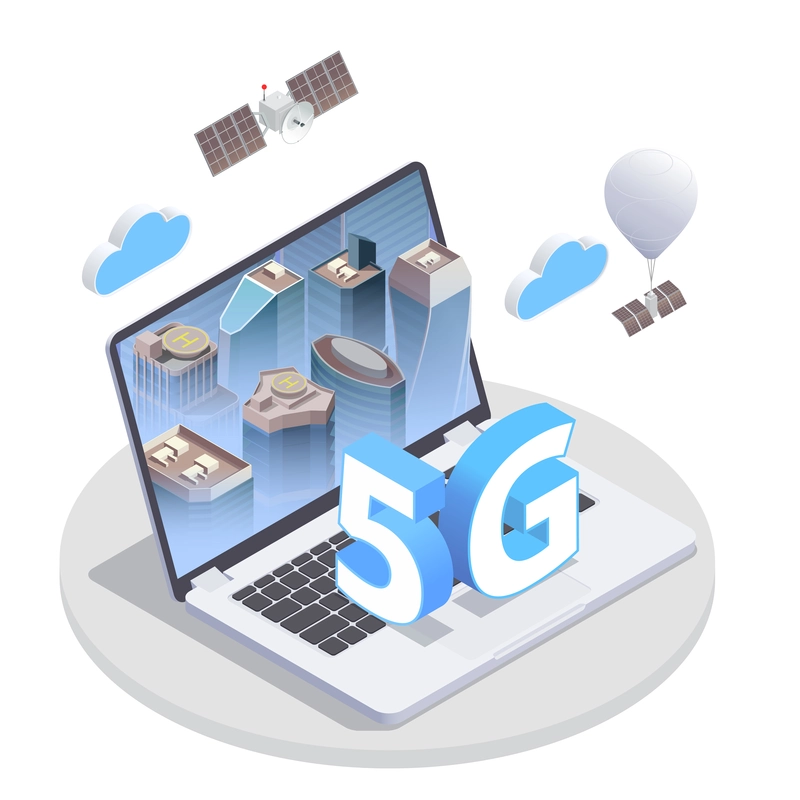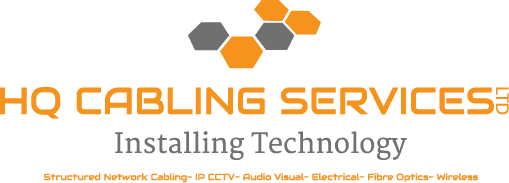What are telecommunications products?
Telecommunications products are devices or tools used to transmit, receive, or process information through electronic systems. These include a wide range of technologies such as mobile phones, routers, modems, and satellites, each playing a role in communicating data over distances. Mobile phones enable direct voice and data transmission, while routers facilitate internet connectivity and data sharing across networks. Modems convert digital data for internet access, and satellites provide network coverage for remote areas. These products are essential in today’s interconnected world, enabling efficient communication across various platforms and devices.
What are the key types of telecommunications products?
Telecommunications products encompass various devices and systems that facilitate communication over distances. These include:
- Mobile Phones: Allow voice and data communication through cellular networks.
- Landline Phones: Traditional wired phones used for voice communication.
- Routers and Modems: Devices that provide internet connectivity.
- Satellite Systems: Enable global broadcasting and communication.
- Switches and Hubs: Distribute data across networks efficiently.
Mobile phones dominate due to their versatility, while routers and modems are crucial for internet access.
How do mobile phones fit into telecommunications?
Mobile phones are integral to telecommunications, enabling wireless communication over vast distances through network infrastructure. They connect to cellular networks using radio frequencies, facilitating voice calls, text messaging, and data transmission. Smartphones support internet connectivity, enhancing communication via apps and social media. This integration is supported by a system of cell towers and satellites, ensuring continuous connectivity. Mobile phones serve as multifunctional devices, expanding their role within the telecommunications framework by enabling features like video calling, GPS navigation, and mobile payments.
What role do routers play in telecommunications?
Routers are critical in telecommunications by directing data traffic efficiently across networks to ensure connectivity. They perform packet forwarding, manage data traffic between different networks, and enable the communication between devices. Routers use routing tables and protocols like BGP or RIP to determine the best path for data transfer. Their role is vital in ensuring data reaches its destination accurately, hence facilitating smooth communication in telecommunications.
How are telecommunications products used?
Telecommunications products facilitate the transmission of information over distances for communication.
- Voice Communication: Products such as telephones and VoIP services allow people to converse over long distances, efficiently replacing older technologies like the telegraph.
- Data Transfer: Internet cables, modems, and routers enable high-speed data transfer, critical for accessing and sharing information online.
- Broadcast Services: Radio transmitters, television sets, and satellite systems deliver audio and visual content to a wide audience, influencing media consumption patterns.
- Mobile Communication: Cell phones and related technologies have revolutionised real-time connectivity, making communication more immediate and convenient.
These products vary based on the technology used (analog vs. digital), the medium of transmission (wired vs. wireless), and the specific application (commercial vs. personal use), all of which influence their deployment and efficiency in differing environments.
How do businesses use telecommunications products?
Businesses use telecommunications products to enhance communication efficiency, enabling seamless connectivity through tools like VoIP, video conferencing, and internet services, which streamline operations and improve collaboration across locations.
How do telecommunications products enhance communication?
Telecommunications products enhance communication by facilitating faster, efficient information exchange across various platforms and devices. These products enable real-time interaction, breaking geographical barriers and improving both personal and professional communication. Moreover, these technologies support collaborations by integrating features such as instant messaging, data sharing, and virtual meetings, which streamline operations and increase productivity.
What is the impact of telecommunications on remote work?
Telecommunications significantly boosts remote work efficiency by enabling seamless communication through video calls, instant messaging, and cloud-based tools. Improved telecommunications lead to increased productivity, cost savings, and employee satisfaction in remote settings.
What are examples of telecommunications products?
Examples of telecommunications products include smartphones, routers, modems, and VoIP equipment. Smartphones enable mobile communication and internet access, while routers and modems are essential for network connectivity. VoIP equipment facilitates voice communications over the internet, offering alternatives to traditional phone lines.

What are some common telecommunications devices?
Telecommunications devices are tools used for transmitting information across distances.
- Telephones
- Mobile phones
- Modems
- Routers
- Satellites
These devices enable communication over both short and long distances and are essential for personal, business, and governmental communication systems.
How do smartphones serve as telecommunications products?
Smartphones facilitate voice and data communication using wireless technology. They support phone calls, text messaging, internet browsing, and multimedia sharing, combining traditional communication methods with modern digital interactions. By integrating network capabilities, smartphones connect individuals globally, acting as portable computing devices. This versatility enhances smartphones as integral components of contemporary communication infrastructure.
What are the uses of satellite phones?
Satellite phones are used for communication in remote or disaster-stricken areas where traditional cellular networks are unavailable, providing reliable voice and data services, especially for emergency responders and remote expeditions.
How much do telecommunications products cost?
Telecommunications products vary widely in price, from under £50 for basic devices to over £1,000 for advanced smartphones or routers. Factors like brand, technology, and features influence prices. Smartphones with higher storage and advanced cameras are more expensive. Below are some pros and cons to consider:
Pros:
- Wide variety of options and features
- Competitive pricing available online
Cons:
- Rapid technology advancements may quickly render devices outdated
- High-end features increase price significantly
What factors influence the cost of telecommunications products?
The cost of telecommunications products is influenced by technology type, market demand, and production costs. Variations in features, brand reputation, and supply chain logistics also play significant roles. Advanced products like 5G devices tend to be pricier due to new technology and development expenses. Geopolitical factors can affect costs due to tariffs and trade policies.
Pros:
- Advanced technology offers better features.
- Brand reputation ensures quality.
Cons:
- Higher costs due to tariffs.
- Increased price for cutting-edge technology development.
How does technology affect the price of telecommunications products?
Technology significantly influences the price of telecommunications products through innovations and advancements. As technology evolves, the cost of producing these products can decrease due to efficient manufacturing processes. However, demand for cutting-edge features may increase prices. Market competition and the introduction of newer technologies can lead to price fluctuations as companies strive to balance affordability and the latest innovations.
Are there budget-friendly telecommunications options?
Yes, budget-friendly telecommunications options include prepaid mobile plans, low-cost internet bundles, and Voice over Internet Protocol (VoIP) services, allowing consumers to manage costs effectively while maintaining essential communication needs.
What are the benefits of telecommunications products?
Telecommunications products offer several benefits, making connectivity and communication more efficient and effective:
- Enhanced Communication: Facilitates immediate interaction across long distances, improving personal and professional connections.
- Increased Productivity: Enables remote work and swift information exchange, leading to enhanced organisational efficiency.
- Cost Efficiency: Reduces the need for physical travel, saving time and financial resources.
- Global Reach: Expands market opportunities and reach by enabling connection with a global audience.
In summary, telecommunications products streamline communication, foster productivity, and enable efficient resource management.
Pros and Cons
- Pros:
- Enhanced Connectivity
- Cost Savings
- Scalability
- Cons:
- Network Dependency
- Security Risks
How do telecommunications products improve connectivity?
Telecommunications products enhance connectivity by facilitating seamless communication over distances through advanced technologies like fibre optics, satellites, and wireless networks. They offer reliable, high-speed communication, expanding network coverage and enabling real-time data exchange across diverse geographical locations.
What are the advantages of using telecommunications in education?
Telecommunications in education offers several advantages:
- Accessibility: Provides remote access to educational resources, facilitating learning for students in various locations.
- Collaboration: Enables students and teachers to communicate and collaborate in real-time, enhancing the learning experience.
- Flexibility: Offers flexible learning schedules, accommodating different learning paces and styles.
- Cost-Effective: Reduces the need for physical materials and facilities, lowering educational costs.
How do telecommunications products support healthcare?
Telecommunications products facilitate communication and data exchange within healthcare systems, enhancing patient care and operational efficiency. These products enable telemedicine, allowing remote consultations and monitoring, which expands access to healthcare services. Communication tools such as secure messaging and video conferencing improve collaboration among healthcare professionals.
What are the challenges of using telecommunications products?
Using telecommunications products presents challenges such as connectivity issues, security risks, and interoperability difficulties. Here’s a breakdown of the key pros and cons:
Pros:
- Enhanced communication efficiency
- Access to advanced features
- Global connectivity
Cons:
- Susceptibility to cyber threats
- Compatibility issues with different systems
- Network reliability concerns
Variations in these challenges can depend on geographical location, technological infrastructure, and product-specific features. Overall, the main aspects involve balancing security, connectivity, and compatibility to optimize the use of telecommunications products.
What are the security concerns with telecommunications products?
Telecommunications products face security concerns like data breaches, unauthorized access, and vulnerabilities to cyberattacks.
- Pros:
- Enhances connectivity
- Improves business operations
- Cons:
- Potential for data interception
- Issues with compliance and privacy regulations
Strengthening encryption and updating security protocols are vital.
How can data breaches affect telecommunications?
Data breaches in telecommunications can lead to compromised customer information, financial losses, and damage to reputation. Breaches often result in regulatory fines and a decrease in customer trust, impacting business operations and revenues.
What are the privacy issues in telecommunications?
Privacy issues in telecommunications include unauthorized data access, surveillance risks, location tracking, data breaches, and inadequate data encryption, all leading to potential misuse of personal information.
How do telecommunications products evolve?
Telecommunications products develop through innovation, market demand, and technological advancements. The evolution process involves upgrading features, enhancing connectivity, and improving efficiency. Changes in regulatory policies and the integration of emerging technologies like 5G and IoT significantly shape product evolution.

What are the latest trends in telecommunications technology?
Recent trends include the expansion of 5G networks, the use of AI in network management, advancements in IoT devices, and improved data encryption methods. 5G promises faster speeds and increased connectivity. AI influences network monitoring and optimisation. The Internet of Things (IoT) is growing, impacting data management and security needs. Enhanced encryption techniques are vital for safeguarding information.
How is 5G technology changing telecommunications?
5G technology offers significantly faster data transfer speeds, reduced latency, and enhanced connectivity. This transformation enables advancements in IoT, smart cities, and autonomous vehicles, boosting network reliability and efficiency.
What is the future of telecommunications products?
The future of telecommunications products is shaped by technological advancements, regulatory changes, and consumer demands. Companies focus on enhancing connectivity, data speed, and security, driven by the rise of 5G, IoT, and AI.
What factors should be considered when selecting telecommunications products?
When selecting telecommunications products, consider the following:
- Scalability: Ensure the product can grow with your needs.
- Compatibility and Integration: Check if the product integrates well with existing systems.
- Cost: Assess both upfront and ongoing expenses.
- Reliability and Quality of Service (QoS): Consider uptime guarantees and service support.
- Security Features: Evaluate the security measures provided by the telecommunications products.
How does usage need influence product choice?
Usage needs determine product choice by prioritising features like durability, functionality, and cost-effectiveness. Matching product features with usage requirements enhances efficiency and user satisfaction.
What role does budget play in choosing telecommunications products?
Budget dictates the affordability and feasibility of telecommunications products, influencing decisions on features and brand selection.
What are the environmental impacts of telecommunications products?
Telecommunications products impact the environment primarily through energy consumption and electronic waste, contributing to carbon emissions during production, use, and disposal. The ICT industry accounts for about 2% of global carbon emissions.
Pros:
- Innovation in recycling: Advances in recycling technologies help reduce waste.
- Energy efficiency improvements: Newer models use less energy.
Cons:
- E-waste: Large volumes contribute to environmental pollution.
- Resource depletion: Manufacturing requires significant raw materials.
Higher efficiency and effective waste management are crucial for reducing environmental impacts.
How do telecommunications products contribute to e-waste?
Telecommunications products contribute to e-waste by quickly becoming obsolete. Mobile phones are a major part of this problem, with telecommunications equipment accounting for approximately 8% of the global e-waste in 2019.
What are the sustainability practices in telecommunications?
Sustainability practices involve deploying energy-efficient technologies and recycling electronic waste. Major companies are implementing renewable energy sources and optimising network infrastructure to reduce carbon footprints.
How can consumers reduce the environmental impact of telecommunications products?
Consumers can minimise the environmental impact of telecommunications products by:
- Choosing Energy-Efficient Devices: Opt for products with Energy Star ratings.
- Limiting Energy Use: Turn off devices when not in use.
- Recycling Old Equipment: Use manufacturer take-back programs for disposal.
- Supporting Sustainable Brands: Prefer products from companies with eco-friendly practices.
- Minimising Device Upgrades: Only upgrade when necessary to reduce e-waste.
These steps can significantly lessen the environmental footprint.
Conclusion
- Wood flooring offers various types, including hardwood, engineered, and laminate, each with different features.
- Hardwood floors are durable but can be expensive and require regular maintenance.
- Engineered wood is a more affordable option, providing stability against moisture.
- Laminate flooring is cost-effective and resistant to scratches but lacks the authenticity of real wood.
- Choosing the right type depends on your budget and lifestyle requirements.
In conclusion, floors can be made of various wood types, each offering distinct advantages in durability, cost, and maintenance. Your flooring decision should align with both your financial and lifestyle considerations for optimal satisfaction.


